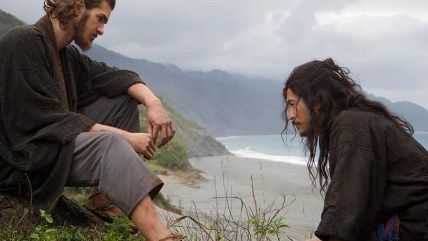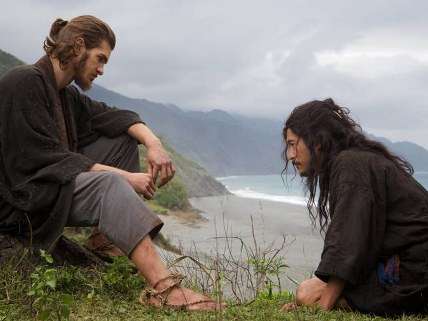Movie Review: Silence
Andrew Garfield and Adam Driver worship at the church of Scorsese.


The question of God's silence in the face of human suffering has tested religious faith throughout the ages. Now Martin Scorsese has made a movie about it. It's a serious movie, admirable in its close examination of moral issues. But its nearly three-hour length may test some viewers' patience—the picture itself seems to grind on for ages.
Getting Silence made appears to have been a Stations of the Cross experience for Scorsese. After discovering the 1966 novel by Sh?saku End?, the director and his co-writer, Jay Cocks, spent more than 15 years, on and off, drafting an acceptable script. Then came the search for financing—tough going for a long, talky movie about a pair of Portuguese priests in 17th-Century Japan. Finally there was a grueling three-and-a-half month shoot amid the rain and mud and stony hills of Taiwan.
The story begins in 1640, with two young Jesuits, Rodrigues (Andrew Garfield) and Garupe (Adam Driver), receiving word that their spiritual mentor, Father Ferreira (Liam Neeson), a longtime missionary in faraway Japan, has renounced his Catholic faith, married a Japanese woman, and become a Buddhist monk. Alarmed by this news, the younger priests set out from the Portuguese colony of Macau to track down their old friend.
Although Roman Catholicism had taken tentative root in Japan nearly a hundred years earlier, by the time Rodrigues and Garupe arrive, the imported religion is an object of violent suppression. Japanese converts are forced to perform their rituals in secret, and to hide as best they can from the traveling samurai inquisitors who are determined to root them out and exterminate them.
Scorsese doesn't flinch from showing us the particulars of this persecution, of course. We see native believers scourged with boiling water, burned alive, suspended and bleeding out over deep pits, bound in straw mats and thrown into the sea. In one big, roaring scene—the most powerful in an otherwise underpowered movie—we see a group of men lashed to wooden crucifixes set up along a rocky shore, facing the in-rushing tide and gasping as waves break over their heads and slowly extinguish their lives. (One can't help thinking, while watching all this, that Rodrigues and Garupe themselves might have participated in similar atrocities back home in Portugal, where they could have joined their fellow Jesuits in the Inquisition and devised torments of their own for similarly reviled Jews, Muslims and heterodox Christians.)
"Why must they suffer so much?" Rodrigues asks God in prayer—and we can hear lifelong-Catholic Scorsese posing the same question. What kind of deity allows such anguish and injustice to be an eternal feature of human existence? "How can I explain His silence to these people?" the priest wonders. The inquisitors try to force the Christians to refute their faith by trampling on an engraving of Jesus; if they won't, their friends will suffer. Rodrigues refuses on principle, but soon begins to wonder if adherence to such rote gestures can justify the pain he knows it will cause.
As it turns out, Father Ferreira has been thinking about these things for a much longer time, and when Rodrigues finally reaches him, at a Buddhist temple in Nagasaki, their quiet discussion of the meandering paths of mercy provides the movie's metaphysical high point.
Unfortunately—perhaps for reasons of logistical difficulty—the picture isn't very Scorsese-like. There's little of his inventive camera style (even with Rodrigo Prieto handling the cinematography) and none of his quick wit or jolts of action. The director draws sharp performances from some of the Japanese actors—especially Issei Ogata as an oddly grinning inquisitor and Tadanobu Asano as a devious interpreter. But Garfield and Driver don't play off each other in an interesting way (and you might wish there were a little less of Garfield's murmuring choirboy narration). It's too bad: these are wounding flaws in a movie that draws them out much too long.




Show Comments (85)